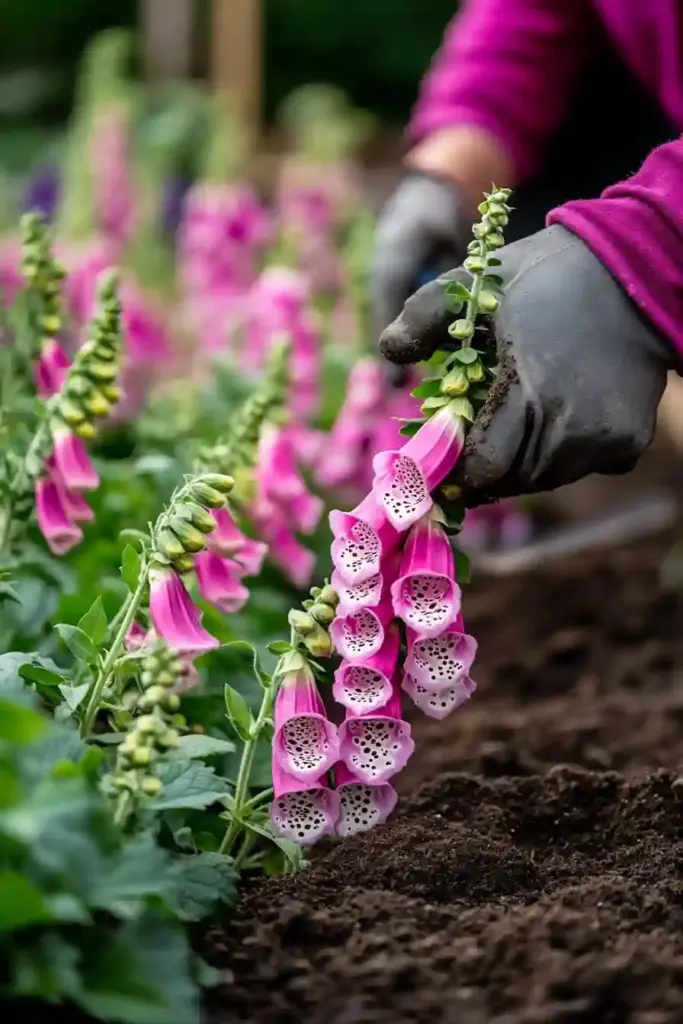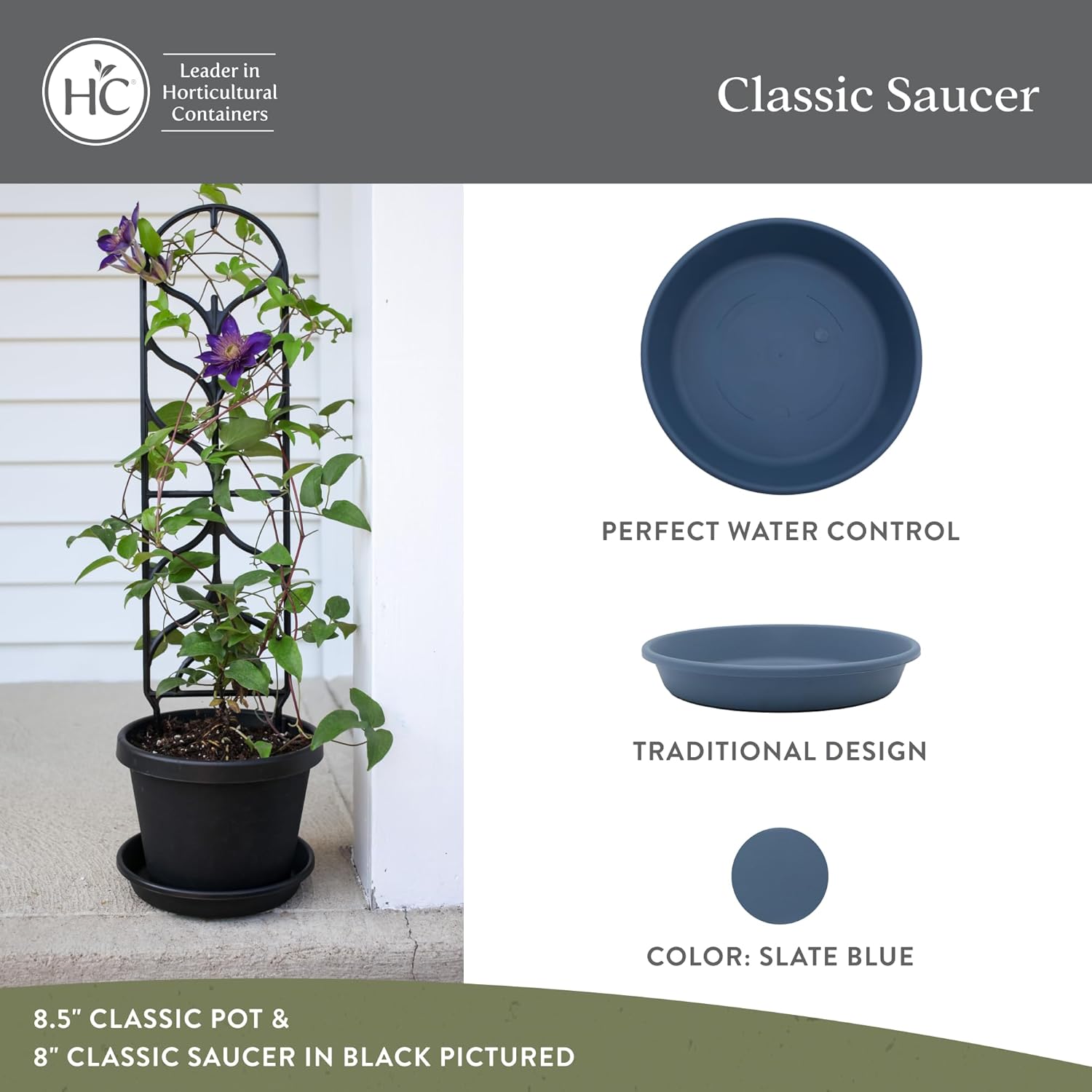Foxgloves are a staple in any cottage-style garden, loved for their tall spires of bell-shaped blooms that draw in bees and add vertical drama. If you’ve ever wondered how to grow foxgloves successfully, you’re in for a treat. Whether you prefer the classic Digitalis purpurea or want to explore unique perennial types, foxgloves are easier to grow than you might think—if you follow the right steps.
⚠️ Important Safety Note: All parts of the foxglove plant are toxic if ingested and can be harmful to pets and children. Always wear gloves when handling the plant and wash your hands thoroughly afterward.
Foxgloves thrive in both sun and shade, making them versatile and eye-catching additions to beds, borders, and even large containers. With their natural ability to self-seed and minimal maintenance needs, they’re perfect for gardeners who want beauty without the fuss.
For even more inspiration on blending traditional blooms with modern gardening techniques, be sure to check out Create an English Garden with These 14 Classic Flowers. This companion guide offers creative ideas and practical advice for integrating foxgloves with other timeless plants to craft a captivating, well-balanced outdoor space.
🌿 Where to Plant Foxgloves for Stunning Results
Understanding where to plant foxgloves is key to helping them flourish. While many plants demand specific conditions, foxgloves are refreshingly adaptable—but they do have their preferences.
Ideal Growing Conditions
- Light: Most foxglove varieties love dappled shade, mimicking their woodland origins. However, certain species like Digitalis parviflora and Digitalis obscura actually prefer full sun to reach their full potential.
- Soil: The sweet spot is moist but well-drained soil. Heavy clay or bone-dry areas aren’t ideal. Consider adding compost or grit to improve drainage if needed.
- Shelter: Choose a location that’s somewhat sheltered from strong winds to prevent tall flower spikes from toppling.
💡 Tip: Avoid waterlogged areas, as too much moisture can cause root rot—foxgloves aren’t fans of soggy feet!
Planning for Biennials
Most common foxgloves like Digitalis purpurea are biennials, meaning they grow leaves in the first year and flower in the second. To ensure flowers every season, it’s smart to plant or sow foxgloves two years in a row. That way, you’ll always have a generation in bloom while the next one is preparing for its big show.
🍃 How to Identify Foxglove Leaves (So You Don’t Mistake Them!)
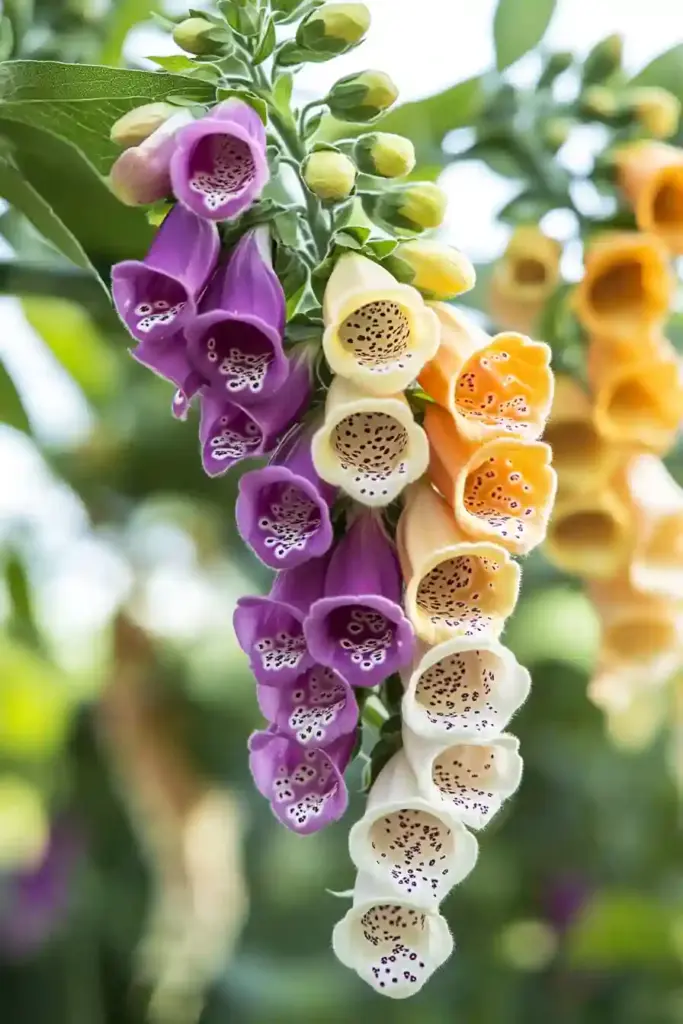
Before your foxglove sends up its impressive flower spike, it starts off much more subtly—with a low cluster of leaves. Knowing how to identify foxglove leaves helps ensure you’re nurturing the right plant and not a look-alike.
Key Features of Foxglove Leaves
- Shape: The leaves are oval to lance-shaped and form a basal rosette (a circular arrangement at ground level) in the first year.
- Texture: They feel soft and hairy to the touch.
- Edges: Slightly toothed margins—not sharp, but definitely not smooth.
- Size: Mature leaves can grow up to 30 cm (12 inches) long.
Common Look-Alikes
Foxglove leaves can sometimes be confused with:
- Comfrey
- Green alkanet
- Great mullein
- Borage
These plants may look similar early on, but foxgloves become easier to identify once they start flowering. If you’re unsure, wait for the blooms before moving or weeding them.
⚠️ Reminder: Like the rest of the plant, foxglove leaves are toxic—handle with care and keep them away from curious pets and children.
🌱 How to Plant Foxgloves for a Healthy Start
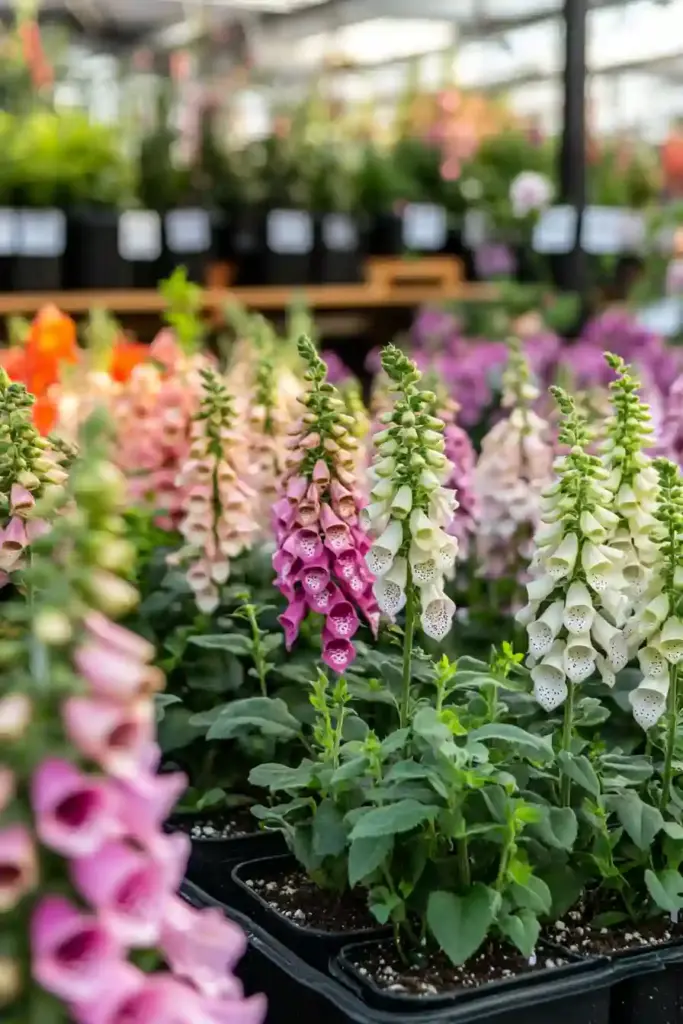
Whether you’re tucking them into a border or potting them up for a patio display, learning how to plant foxgloves properly sets the stage for gorgeous blooms and healthy growth.
When to Plant
- Best seasons: Plant foxgloves in spring or autumn. These cooler seasons allow roots to establish before the extremes of summer or winter hit.
- Biennials or perennials: Both types can go directly into garden beds or containers, depending on your layout and space.
Step-by-Step Planting Guide
- Prepare the soil: Loosen the soil and enrich it with compost or well-rotted organic matter.
- Dig the hole: Make it deep enough for the rootball to sit at the same depth it was growing in the pot.
- Place the plant: Gently firm the soil around the base, making sure the crown isn’t buried.
- Water well: Give it a deep drink right after planting—and keep it consistently moist (but not soggy) in the first few weeks.
Planting in Pots?
Foxgloves can thrive in large containers as long as you:
- Use loam-based compost (like John Innes No. 3)
- Add some grit or perlite for drainage
- Water regularly, especially in hot or dry weather
🌿 Pro tip: If seedlings pop up around the parent plant (and they often do), you can gently lift and transplant them to another area—or pot them up for more control.
🌾 How to Grow Foxgloves from Seed (The Budget-Friendly Way)
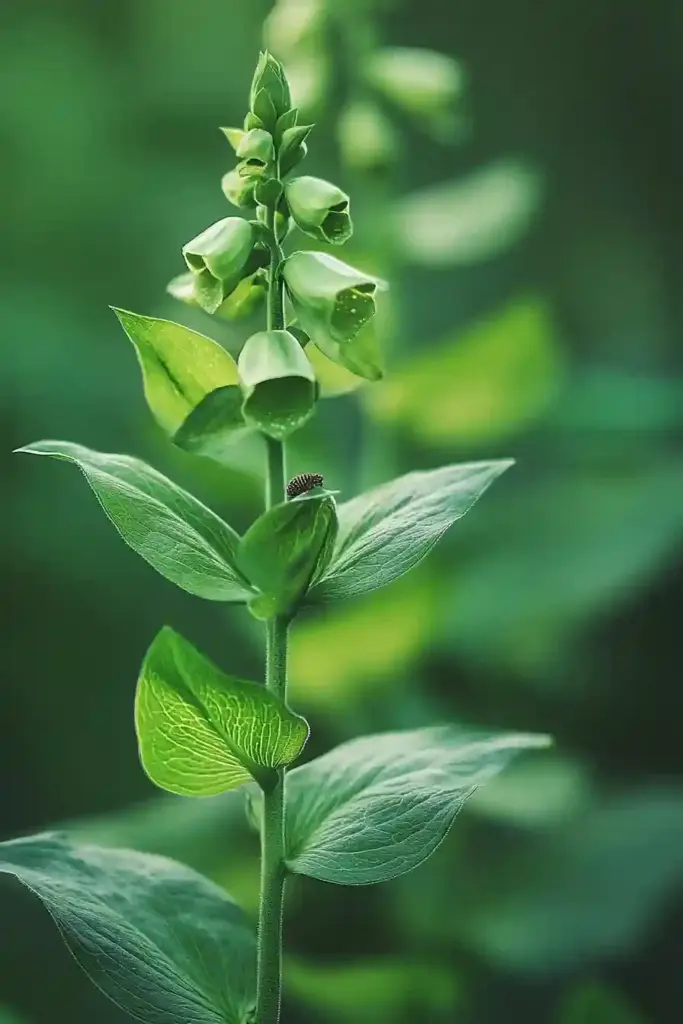
If you want a more economical—and often more satisfying—way to fill your garden with foxgloves, learning how to grow foxgloves from seed is a must. It’s surprisingly simple and perfect for gardeners who enjoy a hands-on approach.
Collecting or Buying Seeds
You can either:
- Let the plants self-seed by not deadheading them after blooming.
- Collect seeds manually in late summer (usually August).
- Or, of course, buy seed packets for specific varieties.
🛑 Important: Always wear gloves when handling seeds, and wash hands thoroughly—foxglove seeds are just as toxic as the rest of the plant.
Sowing Foxglove Seeds
There are two common methods:
1. Direct Sowing (easiest)
- Scatter the seeds thinly in the desired area.
- Do not cover them with soil—they need light to germinate.
- Keep the area moist but not soggy until germination.
2. Sowing in Trays (for more control)
- Fill a seed tray with fine seed compost.
- Sow seeds on the surface and place a propagator lid or glass sheet over it.
- Keep the tray in a cold frame or unheated greenhouse over winter.
- Plant out the seedlings in spring.
Patience Pays Off
Remember: most foxgloves are biennial, so you won’t get flowers in the first year—but your effort will pay off next summer with tall, elegant blooms that often reseed and return again and again.
🌼 When Do Foxgloves Flower?
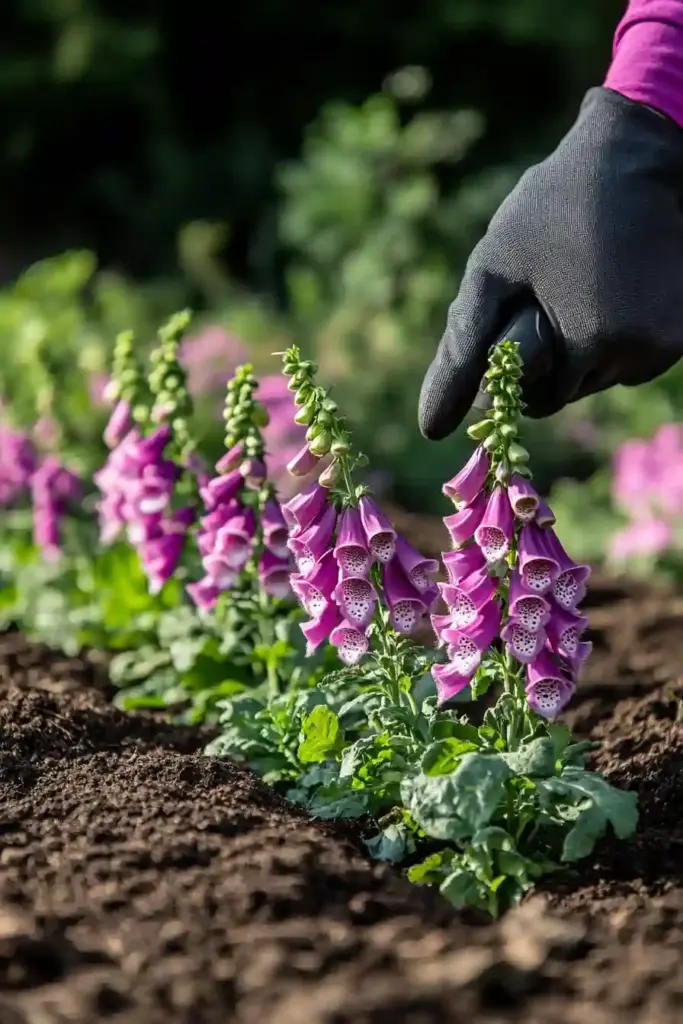
Knowing when foxgloves flower helps you plan your garden for continuous seasonal color. These towering beauties are a highlight of late spring and early summer—but their blooming schedule depends on the type you’re growing.
Blooming Timeline by Type
- Biennial Foxgloves (e.g. Digitalis purpurea):
- Sow or plant in year one
- Flower in year two, usually from late spring through mid-summer
- After flowering, they typically set seed and die
- Perennial Foxgloves (e.g. Digitalis parviflora, Digitalis lanata):
- Flower every year once established
- Peak bloom is also from late May to July, but they’ll keep coming back
Why Isn’t My Foxglove Flowering?
If your foxglove has healthy leaves but no bloom, don’t worry—this is common with biennials. Sometimes, due to slow growth in the first year (often from lack of sun or nutrients), they delay flowering to year three.
🌟 Pro tip: To enjoy flowers every year, stagger your sowing so you always have first- and second-year plants growing simultaneously.
🌿 How to Care for Foxgloves (So They Thrive With Minimal Effort)
One of the best things about learning how to grow foxgloves is discovering just how little they ask from you. Once they’re settled in, these stately blooms pretty much look after themselves.
The Golden Rules of Foxglove Care
- Right spot, right soil
- Grow them in dappled shade or partial sun
- Make sure the soil is moist but well-drained, with plenty of organic matter
- Know your type
- Some foxgloves are biennial (one bloom cycle), others are perennial (return each year)
- Plan your planting accordingly for continuous blooms
- Save the seeds
- After flowering, you can let the seedheads ripen and self-seed, or collect seeds for controlled sowing next season
Post-Bloom TLC
- After flowering, biennials can be dug up and composted—or left to seed if you want volunteers next year
- For perennials, cut them back between mid-autumn and early spring to keep the plant tidy and encourage fresh growth
Watering & Feeding
- Established foxgloves in the ground rarely need extra watering, unless it’s been very dry
- Container-grown plants may need regular watering in summer
- No need for heavy feeding—a spring mulch of compost or leaf mold is usually enough
🪴 Quick tip: If your foxgloves look untidy after blooming, you can clear them to make room for other summer performers.
🐞 Pests and Diseases: Are Foxgloves Trouble-Free?
When it comes to garden maintenance, you’ll be glad to hear that foxgloves are mostly pest-resistant and disease-free. In fact, their toxic nature works in your favor—they’re not very appetizing to most pests!
Common Issues (and Why You Might Not Need to Worry)
- Slugs and Snails
- These pests typically avoid foxgloves due to their toxicity
- However, young seedlings might still be vulnerable—use barriers or wildlife-friendly slug deterrents to protect them early on
- Caterpillars
- Some moth species, like the foxglove pug and angle shades, will nibble on leaves and flowers
- But these caterpillars are part of the food chain and usually don’t cause serious harm—let nature do its thing
- Fungal Issues
- Overly wet soil can lead to root rot, especially in poorly drained spots
- Avoid this by planting in free-draining soil and not overwatering
🌿 Pro tip: Foxgloves are generally deer- and rabbit-resistant, making them perfect for gardens in rural or wildlife-heavy areas.
🛍️ Buying Advice: What to Know Before You Pick Your Foxgloves
Before you hit “add to cart” or head to the nursery, it’s smart to know what to look for when buying foxgloves—because not all varieties behave the same, and your growing conditions matter.
Quick Buying Checklist
- ✅ Check the variety:
Some foxgloves are biennial (flower once), others are perennial (flower year after year). Choose based on how long you want them in your garden. - ✅ Match to your garden’s light:
While most prefer partial shade, certain types like Digitalis parviflora thrive in full sun. Read the label before you plant! - ✅ Inspect the plants:
Avoid foxgloves with:- Wilted or yellowing leaves
- Mold or fungus on the soil
- Signs of pest damage or rot near the base
Trusted Online Retailers
If you’re shopping online, these UK-based nurseries often carry great selections of foxglove varieties:
- Sarah Raven
- Crocus
- Suttons
- Hayloft
- J. Parkers
💡 Tip: If you’re new to growing foxgloves, consider buying young plants or plugs instead of seeds—they’ll get you blooming results faster.
🌷 Foxglove Varieties to Grow: From Classic to Quirky
One of the joys of learning how to grow foxgloves is discovering just how many beautiful varieties are out there. Whether you want towering pink spires or soft yellow perennials, there’s a Digitalis for every style of garden.
Popular Biennial Foxgloves
These bloom in their second year, then typically set seed and die—but they often self-seed generously!
- Digitalis purpurea
The classic wild foxglove with tall, dark-pink spires—loved by bees and cottage gardeners alike
🌿 Height: Up to 2m - Digitalis purpurea ‘Sutton’s Apricot’
Elegant, apricot-pink blooms that soften a border beautifully
🌿 Height: Around 1m - Digitalis purpurea Excelsior Group
Mixed shades of white, pink, and mauve—excellent for a whimsical color palette
🌿 Height: Up to 2m
Stunning Perennial Foxgloves
These bloom year after year and are great for more permanent planting schemes.
- Digitalis lutea
Delicate, pale-yellow flowers—perfect for naturalistic gardens
🌿 Height: 60cm - Digitalis parviflora
Unique, brownish-copper blooms tightly packed on narrow spikes
🌿 Height: 60cm - Digitalis grandiflora
Large, warm-yellow flowers that bring cheer to shaded spots
🌿 Height: 1m - Digitalis purpurea ‘Pam’s Choice’
Showy, white flowers with deep maroon throats—eye-catching and modern
🌿 Height: 1.5m
🌱 Pro tip: Mix biennials and perennials in your garden to ensure continuous color and structure year after year.
❓ Frequently Asked Questions About Growing Foxgloves
Even experienced gardeners run into a few foxglove surprises now and then. Here are some of the most common questions people ask when learning how to grow foxgloves—answered clearly and confidently.
🕰️ Why aren’t my foxgloves flowering?
If your plant is leafy but not blooming, it’s likely a biennial in its first year. Foxgloves flower in their second year, so give it time. If it’s in its second year and still not blooming, it may have had poor growth the previous year and could be delayed until year three.
🐾 Are foxgloves safe around pets and kids?
Foxgloves are toxic to humans and animals if ingested, so they should be planted with caution if you have curious pets or young children. That said, serious incidents are rare. If your pet has a habit of chewing plants, it’s best to plant foxgloves out of reach or skip them altogether.
🪴 When is the best time to move a foxglove?
Move foxgloves in early spring, before growth ramps up. This gives the plant time to re-establish before flowering season. Be sure to dig up a generous rootball to minimize transplant shock.
🐛 What’s eating my foxgloves?
Foxgloves are rarely troubled by pests, but you may spot:
- Caterpillars of specific moth species—these are generally harmless and support local birdlife
- Slugs and snails, especially on young seedlings—use organic deterrents if needed
Fortunately, rabbits and deer usually steer clear due to the plant’s toxicity.



